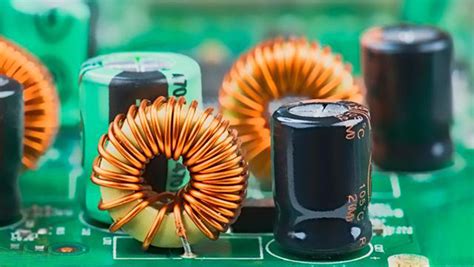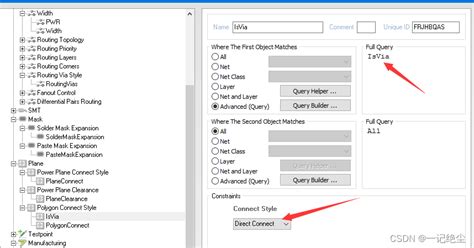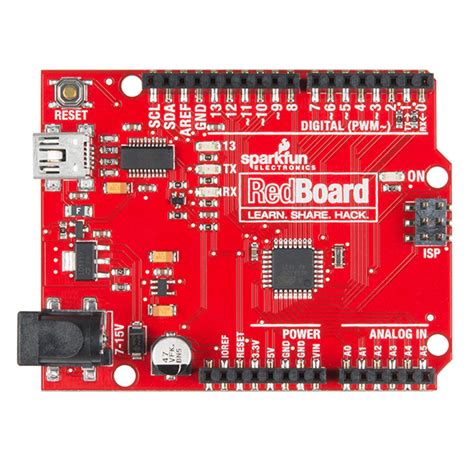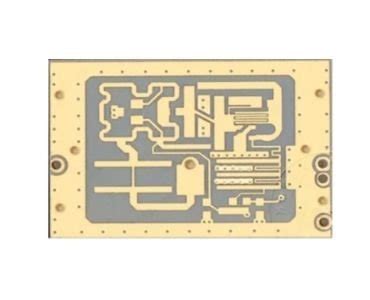Aluminum pcb cost
Factors Influencing Aluminum PCB Cost
Aluminum PCBs, or printed circuit boards, have become increasingly popular in various industries due to their excellent thermal conductivity and durability. These characteristics make them particularly suitable for applications involving high power and heat dissipation, such as LED lighting and power electronics.
However, the cost of aluminum PCBs can vary significantly based on several factors. Understanding these factors is crucial for businesses and engineers looking to optimize their production costs while maintaining quality.
One of the primary factors influencing the cost of aluminum PCBs is the type of aluminum used.
Aluminum PCBs are typically composed of a dielectric layer, a copper circuit layer, and an aluminum base layer. The quality and thickness of the aluminum base can significantly impact the overall cost. Higher-grade aluminum materials, which offer better thermal performance and mechanical strength, tend to be more expensive. Additionally, the thickness of the aluminum layer can affect both the cost and the thermal management capabilities of the PCB. Thicker aluminum layers provide better heat dissipation but also increase material costs.
Another critical factor is the complexity of the PCB design.
More intricate designs with multiple layers, fine traces, and numerous vias require advanced manufacturing techniques and more time to produce, leading to higher costs. The number of layers in a PCB is particularly influential; multi-layer aluminum PCBs are more expensive than single-layer ones due to the additional materials and processing steps involved. Furthermore, the precision required in etching fine traces and drilling vias can increase production costs, as it necessitates the use of sophisticated equipment and skilled labor.
The choice of surface finish also plays a significant role in determining the cost of aluminum PCBs.
Surface finishes are applied to protect the copper circuits from oxidation and to ensure good solderability. Common finishes include HASL (Hot Air Solder Leveling), ENIG (Electroless Nickel Immersion Gold), and OSP (Organic Solderability Preservatives). Each finish has its advantages and cost implications. For instance, ENIG provides excellent surface planarity and is suitable for fine-pitch components, but it is more expensive than HASL. The selection of a surface finish should be based on the specific requirements of the application, balancing performance with cost considerations.
Production volume is another factor that can influence the cost of aluminum PCBs.
Generally, larger production runs benefit from economies of scale, reducing the per-unit cost. Manufacturers often offer discounts for bulk orders, as the setup costs are spread over a larger number of units. Conversely, small production runs or prototypes may incur higher costs per unit due to the fixed setup expenses.
Lastly, geographical location and the choice of manufacturer can also impact the cost. Manufacturing PCBs in regions with lower labor costs can result in significant savings. However, it is essential to consider the trade-offs, such as potential differences in quality standards and lead times. Selecting a reputable manufacturer with a proven track record can ensure that the aluminum PCBs meet the required specifications and quality standards.
In conclusion, the cost of aluminum PCBs is influenced by a variety of factors, including the type and thickness of aluminum used, the complexity of the design, the choice of surface finish, production volume, and the geographical location of the manufacturer. By carefully considering these factors, businesses can make informed decisions that balance cost with performance and quality, ultimately optimizing their production processes and achieving their project goals.

Cost Comparison: Aluminum PCB Vs. Traditional PCB
When evaluating the cost implications of using aluminum PCBs compared to traditional PCBs, it is essential to consider several factors that influence the overall expense. Aluminum PCBs, known for their excellent thermal conductivity and durability, are increasingly popular in applications requiring efficient heat dissipation, such as LED lighting and power electronics. However, the decision to opt for aluminum over traditional materials like FR-4 involves a careful analysis of both material and manufacturing costs.
To begin with, the material cost of aluminum PCBs is generally higher than that of traditional FR-4 PCBs.
Aluminum, being a metal, inherently costs more than the fiberglass and epoxy resin used in FR-4 boards. This difference in material cost is primarily due to the superior thermal properties and mechanical strength that aluminum offers. These attributes make aluminum PCBs particularly advantageous in high-power applications where heat management is critical. Despite the higher initial material cost, the long-term benefits of improved performance and reliability can justify the investment, especially in applications where failure due to overheating could lead to significant losses.
In addition to material costs, the manufacturing process for aluminum PCBs can also contribute to the overall expense.
The production of aluminum PCBs involves specialized techniques such as drilling and etching, which require precision and expertise. These processes can be more complex and time-consuming compared to those used for traditional PCBs, potentially leading to higher labor costs. However, advancements in manufacturing technology have gradually reduced these costs, making aluminum PCBs more accessible to a broader range of industries.
Moreover, when considering the cost comparison, it is crucial to factor in the performance benefits that aluminum PCBs offer.
The enhanced thermal management capabilities of aluminum PCBs can lead to increased efficiency and longevity of electronic components. This can result in lower maintenance costs and reduced risk of component failure, which are significant considerations for industries where reliability is paramount. Consequently, while the upfront cost of aluminum PCBs may be higher, the potential savings in operational costs and improved product lifespan can offset this initial investment.
Furthermore, the choice between aluminum and traditional PCBs should also take into account the specific requirements of the application.
For instance, in low-power applications where heat dissipation is not a primary concern, traditional PCBs may suffice, offering a more cost-effective solution. Conversely, in high-power applications where thermal management is critical, the benefits of aluminum PCBs can outweigh the higher costs, providing a more suitable and efficient solution.
In conclusion, the cost comparison between aluminum PCBs and traditional PCBs is not solely determined by the initial material and manufacturing expenses. It is a multifaceted decision that involves evaluating the long-term benefits, performance requirements, and specific application needs. While aluminum PCBs may present a higher upfront cost, their superior thermal management capabilities and potential for reducing operational expenses make them an attractive option for many industries. As technology continues to advance, the cost gap between aluminum and traditional PCBs is likely to narrow, further enhancing the appeal of aluminum PCBs in various applications.

How Design Choices Impact Aluminum PCB Pricing
When considering the cost of aluminum PCBs, it is essential to understand how various design choices can significantly impact pricing. Aluminum PCBs, known for their excellent thermal conductivity and durability, are widely used in applications requiring efficient heat dissipation, such as LED lighting and power electronics. However, the cost of manufacturing these PCBs can vary greatly depending on several design factors.
Firstly, the thickness of the aluminum core is a primary determinant of cost.
Thicker aluminum cores provide better heat dissipation, which is crucial for high-power applications. However, they also require more material and can be more challenging to process, leading to increased manufacturing costs. Designers must balance the need for thermal management with budget constraints, often opting for a core thickness that meets performance requirements without unnecessarily inflating costs.
In addition to core thickness, the choice of dielectric layer material also plays a significant role in pricing.
The dielectric layer, which insulates the conductive copper layer from the aluminum core, must have excellent thermal conductivity and electrical insulation properties. High-performance dielectric materials can enhance the thermal management capabilities of the PCB but are typically more expensive. Therefore, selecting a dielectric material that offers the necessary performance at a reasonable cost is crucial for managing overall expenses.
Moreover, the complexity of the PCB design can influence the cost.
More intricate designs with multiple layers or complex routing require additional processing steps and more sophisticated manufacturing techniques, which can drive up costs. Simplifying the design where possible, such as by reducing the number of layers or optimizing the layout, can help minimize expenses without compromising functionality.
Another factor to consider is the surface finish applied to the PCB. Surface finishes protect the copper traces from oxidation and improve solderability.
Common finishes include HASL (Hot Air Solder Leveling), ENIG (Electroless Nickel Immersion Gold), and OSP (Organic Solderability Preservative). Each finish has its advantages and cost implications. For instance, ENIG provides excellent surface planarity and is suitable for fine-pitch components but is more expensive than HASL. Choosing the appropriate surface finish based on the specific application and budget can help control costs.
Furthermore, the production volume can significantly affect the unit cost of aluminum PCBs.
Larger production runs benefit from economies of scale, reducing the cost per unit. For smaller quantities, manufacturers may charge a premium due to the setup and tooling costs involved. Therefore, planning production volumes carefully and consolidating orders where possible can lead to substantial cost savings.
Finally, the choice of manufacturer can also impact pricing.
Different manufacturers may offer varying levels of expertise, quality, and pricing structures. It is essential to select a manufacturer with a proven track record in producing high-quality aluminum PCBs at competitive prices. Conducting thorough research and obtaining quotes from multiple suppliers can help identify the best option for balancing cost and quality.
In conclusion, the cost of aluminum PCBs is influenced by several design choices, including core thickness, dielectric material, design complexity, surface finish, production volume, and manufacturer selection. By carefully considering these factors and making informed decisions, designers can effectively manage costs while ensuring that the final product meets performance and reliability requirements. Understanding the interplay between design choices and pricing is crucial for optimizing the cost-effectiveness of aluminum PCBs in various applications.

Tips for Reducing Aluminum PCB Manufacturing Costs
When it comes to manufacturing aluminum PCBs, cost efficiency is a critical consideration for businesses aiming to maintain competitiveness in the electronics market. Aluminum PCBs, known for their excellent thermal conductivity and durability, are increasingly popular in applications such as LED lighting, power converters, and automotive electronics. However, the cost of manufacturing these PCBs can be a significant concern. Fortunately, there are several strategies that manufacturers can employ to reduce costs without compromising quality.
To begin with, optimizing the design of the aluminum PCB is a fundamental step in cost reduction.
By simplifying the design, manufacturers can minimize the number of layers and reduce the complexity of the circuit. This not only decreases material usage but also shortens production time, leading to lower costs. Additionally, employing design for manufacturability (DFM) principles can help identify potential issues early in the design phase, preventing costly revisions later in the production process.
Another effective approach is to carefully select materials.
While aluminum is the primary material, the choice of dielectric materials and copper thickness can significantly impact costs. Opting for standard materials that are readily available can reduce lead times and material expenses. Moreover, working closely with suppliers to negotiate better prices for bulk purchases can further drive down costs. It is also beneficial to stay informed about market trends and fluctuations in material prices to make strategic purchasing decisions.
Furthermore, leveraging advanced manufacturing technologies can enhance efficiency and reduce costs.
Automation in the production process can lead to significant savings by minimizing labor costs and reducing the likelihood of human error. Implementing automated optical inspection (AOI) systems, for instance, ensures high-quality output while reducing the need for manual inspection. Additionally, investing in modern equipment that supports faster production speeds and higher precision can lead to long-term cost benefits.
In addition to technological advancements, optimizing the supply chain is crucial for cost reduction.
Establishing strong relationships with reliable suppliers can ensure a steady supply of materials at competitive prices. Moreover, consolidating orders and optimizing logistics can reduce shipping costs and lead times. By adopting a just-in-time inventory approach, manufacturers can minimize storage costs and reduce the risk of excess inventory.
Another consideration is the scale of production.
Larger production runs often result in economies of scale, where the cost per unit decreases as the volume increases. Therefore, planning production schedules to maximize batch sizes can lead to substantial cost savings. However, it is essential to balance this with demand forecasts to avoid overproduction and potential waste.
Finally, continuous improvement and cost analysis are vital components of a cost-reduction strategy.
Regularly reviewing production processes and identifying areas for improvement can lead to incremental cost savings over time. Implementing lean manufacturing principles, such as reducing waste and optimizing workflow, can enhance overall efficiency and reduce costs. Additionally, conducting a thorough cost analysis to identify the most significant cost drivers allows manufacturers to focus their efforts on areas with the greatest potential for savings.
In conclusion, reducing aluminum PCB manufacturing costs requires a multifaceted approach that encompasses design optimization, material selection, technological advancements, supply chain management, production scaling, and continuous improvement. By strategically implementing these practices, manufacturers can achieve cost efficiency while maintaining the high quality and performance standards expected in the industry.







